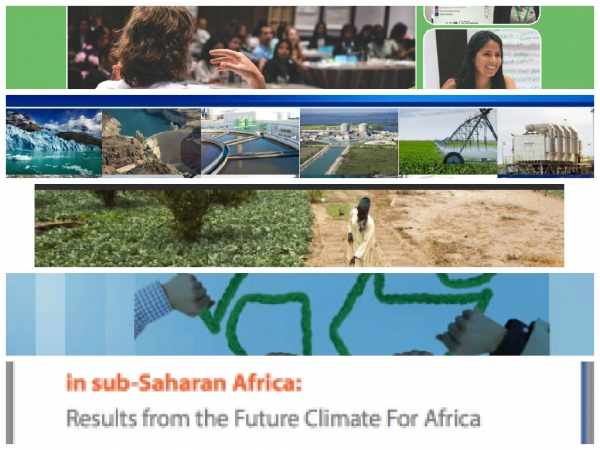New publications on climate change and green markets

1) Report: Building cross cutting skills and landscapes knowledge for effective youth leadership
This report offers their experiences, lessons, and suggestions from youth activities at the Lima Global Landscapes Forum (GLF 2014) as a concrete example of how meaningful participation of youth in conferences can be realized.
http://goo.gl/fYmqqa
2) Factbook: Leading the energy transition. Introduction to the water and energy challenge
This FactBook first seeks to provide a global picture of the main water resources, the many dimensions of freshwater inequality challenges, and current uses of freshwater. It then presents an overview of the current and forecast mismatch between supply and demand, the reasons for the mismatch and its likely consequences if left unaddressed. The FactBook then summarizes the water risks facing our society and their multi-dimensional nature. It also describes the water industry’s principal value chains, market trends, and promising solutions. Finally, it compares water consumption for different energy-production pathways and illustrates the impact water constraints have already had, and continue to have, on the development of conventional and unconventional resources.
http://goo.gl/zjsV62
3) Guarantees for Green Markets: Potential and Challenges
This publication outlines the challenges of investing in low-carbon and climate-resilient technologies and activities in Latin America and the Caribbean. It explores how guarantees can respond to those challenges and highlights the crucial role national development banks can play in structuring and funding credit-guarantee schemes for their domestic markets. Drawing on comprehensive desk research and case study examples, the publication provides a number of recommendations that national development banks should consider when designing guarantee instruments for green markets. The scarcity of funds available to finance green projects in the region results from a combination of various financial and non-financial barriers, some specific to green investments and others generic in the region. Only if properly integrated in comprehensive and well-designed programs can guarantee schemes help unlock private investment in green markets. As an implicit subsidy for private borrowers that gives them a contingent claim on government resources, guarantees have the potential to create market distortions. Such distortions are worthwhile only if the guarantee yields correspondingly high economic, social, and/or environmental benefits. Thus, no guarantee scheme should be designed without a thorough cost-benefits analysis.
http://publications.iadb.org/handle/11319/6722
4) Promoting the use of climate information to achieve long-term development objectives in sub-Saharan Africa: Results from the Future Climate For Africa scoping phase
This report is based on initial research into the use of long-term (5-40 year) climate information in Malawi, Rwanda, Zambia and the coastal cities of Accra, Ghana and Maputo, Mozambique. The study also assesses how long-term climate information is being used by planners of large dams and ports in Africa. The report finds that governments and businesses are failing to consider long-term climate information in investment planning: in most of the case study countries, not a single example of climate information being effectively taken up into long-term decision making was found. As a consequence, new infrastructure and programmes may be highly vulnerable to future climate impacts.
http://goo.gl/2a0S0F
5) Food security impact of agricultural technology adoption under climate change: Micro-evidence from Niger
FAO distinguish between (i) exposure to climatic disruptions, (ii) biophysical sensitivity to such disruptions, (iii) household adaptive capacity in terms of farmers’ ability to prepare and adjust to the resulting stress, and, finally, (iv) system-level adaptive capacity that serve as enabling factors for household-level adaptation. We employ multivariate probit and instrumental variable techniques to model the selection decisions and its impact. The results clearly indicate that while the use of modern inputs and organic fertilizers significantly improves crop productivity, results are unclear for the impact of crop residues. Moreover, factors driving modern input use are different than those of crop residues and organic fertilizer which can be characterized at low investment capital requirements, higher labour requirements and longer time for results versus modern inputs which can be characterized as higher investment capital requirements, less labour requirement and shorter time for returns. Exposure to climatic stress and biophysical factors are identified as key factors that hinder or accelerate adoption. Results also show that greater climate variability as represented by the coefficient of variation of rainfall and temperature and recent climate shocks as represented by average rainfall shortfall increases use of risk-reducing inputs such as crop residue, but reduce the use of modern inputs. In addition, the key role of system-level adaptive capacity in governing input use decision. Results presented have implications for understanding and overcoming barriers to selection for each practice, distinguishing structural aspects such as exposure and sensitivity from potential interventions at the household or system levels linked to adaptive capacity.
http://www.fao.org/3/a-i4366e.pdf

Facebook comments